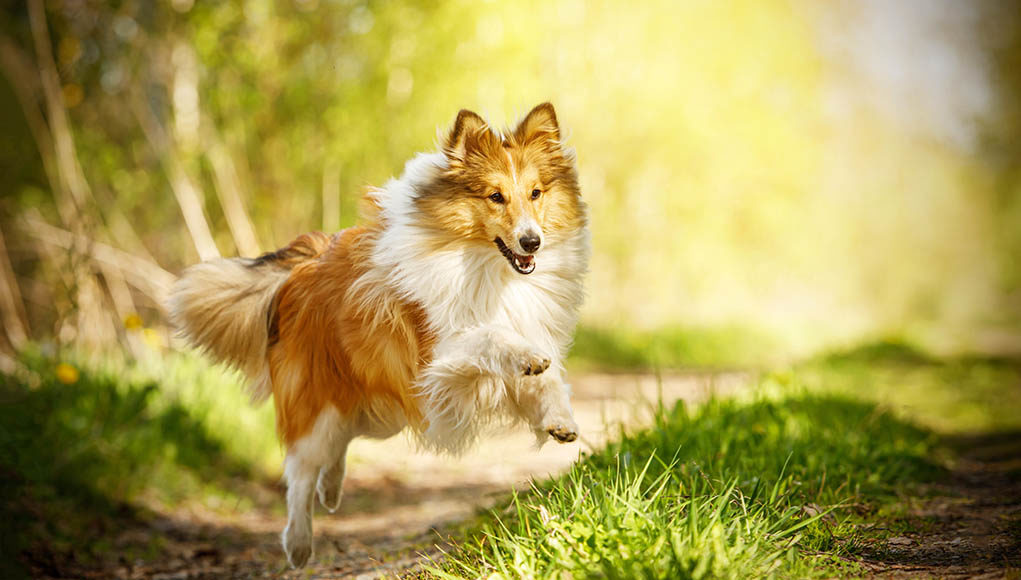Table of Contents
This herding dog’s compelling appearance and sweet temperament will capture your heart.
From breeding the Collie into other smaller breeds, sweet as cinnamon, cuddly as a bear but can protect you no matter what, The Shetland Sheepdog!
The Shetland Sheepdog puppies are prominent for their temperament, utility, and outstanding skills. Similar to other herding dogs, the Shetland Sheepdog has been recognized for its extreme intelligence.
The Shetland Sheepdog's ability to calculate to herd and successfully do so, as well as its efficiency in other utility work, prove its place in the smartest dog ranks.
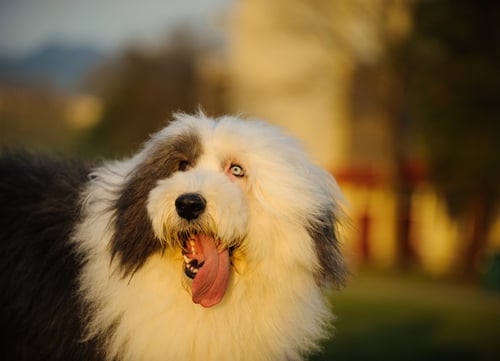
Shetland Sheepdog: History
Collies from Scottland were brought to the island of Shetland, and as farmers utilize the function of the Collie, they ought to breed with the same function but smaller in size.
From the Islands of Shetland, a crossbreed of Rough Collie and smaller dog breeds was made to create a smaller herding companion. Here, Shetland Sheepdog comes into place.
The residents of Shetland who owned a farm wanted a smaller herding dog close to a Rough Collie. They then began breeding the Rough Collie to a variety of smaller dog breeds.
The Shetland Sheepdog’s history is still indefinite regarding the original breeds used to mix with the Rough Collie to breed the Shetland Sheepdog.
The Shetland Sheepdog is much more compact and has a sturdier double coat, too.
The England Kennel Club has registered the Shetland Sheepdog as Shetland Collie but received negative feedback from Collie enthusiasts which made them change their name to now as ‘Shetland Sheepdog’.
Physical Traits
The Shetland Sheepdog has a slim appearance, but they’re quite muscular in build.
They have smaller proportions compared to the Rough Collie but quite function the same way. Shetland Sheepdog stands at 13-18 inches and weighs 15-25 pounds.
Shetland Sheepdogs have a long and double type of coat. Their inner coat is denser and rougher, while their outer coat is finer and longer.
Shetland Sheepdogs come in Black and tan, Black and white, Black and White, Blue Merle and white, Blue Merle and White, Sable and white, and Sable Merle and white.
Shetland Sheepdog's eyes are almond-like rims in shape and are usually dark or blue in blue merle shades. Their nose is quite big.
Shetland Sheepdog's ears stand tall on the side edge of their forehead. Their ears are flexible and pointed.
The Shetland Sheepdog's chiseled face shape is prominently long but extends smoothly. It has a protruding forehead and drops a bit to the muzzle.
The Shetland Sheepdog’s neck is sturdy, thick, and arched.
The neck connects well to their body as their chest protrudes well and slopes to their stomach. Shetland Sheepdog’s tail extends low at their back.
Their legs are quite muscular and thick as well. Their hindlegs are a bit higher than their forelegs.
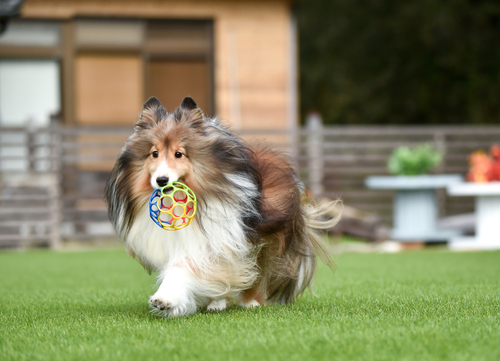
Temperament of a Shetland Sheepdog
Shetland Sheepdogs are free-spirited and affectionate but calculating. Shetland Sheepdogs thrive on vast fields as they run and sprint, showing their agility.
They are amazing as herding dogs and calculators that are well enough to do tasks successfully.
Shetland sheepdogs are excellent family dogs, too! They’re very much affectionate.
They go well with a single owner and even better with families. Shetland Sheepdogs are great around children.
Shetlands have a keen sense of protection. They’ll make sure their territory is safe.
This dog breed is quite vigilant around strangers, but it may welcome newcomers as long as they do not pose a threat to itself or its families.
Shetland Sheepdogs are also great with other dogs. They’re very approachable and sociable, and They are curious enough to engage with other dogs when they see one.
Of course, they will need to be introduced to these new strangers with whom they must become familiar before welcoming them well.
With the help of basic continuous training and early socialization, Shetland Sheepdogs can become even more effective and disciplined in their interactions with others.
Shetland Sheepdogs may require homes with large spaces or yards.
Shetlands may not do well in apartment living, but if they get their exercise and training needs met, they may do fine. It’s still best to provide Shetland Sheepdogs with a home with a large space.
Shetland Sheepdogs are highly flexible in terms of lifestyle. They can live in routine but go better with various activities and surroundings.
Shetland Sheepdogs are not good with being left alone. Owners can leave them with someone the dog is familiar with instead.
Also, Shetland Sheepdogs can become destructive when bored. They are good in colder weather but may not be as tolerable in hot weather.
Training & Exercise
Shetland Sheepdogs are part of the herding breed. They are extremely intelligent and energetic.
Owners can utilize this by training them with agility and obedience. Owners should also prepare training regarding Shetland Sheepdog’s vocal.
Shetland Sheepdogs should have basic training and early socialization. High-energy dogs may have problems with socialization and may harm others if not contained well.
This can help them learn to behave independently around other dogs, animals, and even humans.
Shetland Sheepdogs may have difficulty containing energy as pups but with the help of daily exercise, they will be able to release their excess energy.
Shetland Sheepdogs will need daily walks at least twice a day as they grow. A walk for at least 20-30 minutes will suffice.
Along with it, owners may include playtime and other activities. Shelties are quite intelligent and they may get bored if training and exercises are repetitive.
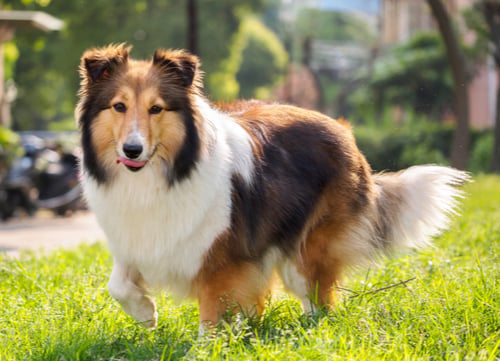
Shetland Sheepdog Health Care
Shetland Sheepdogs are generally a healthy breed. They can live from 12-14 years.
However, due to irresponsible breeding, some litters acquired congenital diseases. Here are some of the diseases Shetland Sheepdogs are prone to:
Dermatomyositis
Dermatomyositis is inflammation of tissues. It affects the blood vessels, muscles, and several breeds have this condition such as Chow Chow, German Sheperd, and many more.
It appears quite early as seven weeks of age. The prognosis for dermatomyositis varies in severity.
Treatment and maintenance can be given by the veterinarian. Dermatomytosis should be addressed immediately when diagnose as it can accumulate other diseases as well.
Epilepsy
Idiopathic Seizures‘ causes are unknown, but it is an inherited cognition. Some Shetland Sheepdogs may suffer from this condition, and there is no known cure as of now.
Veterinarians may administer anti-seizure medication, but it can only decrease the severity of the seizure.
Make sure to have your Shetland Sheepdog checked in order to provide the right medication for the condition.
Gallbladder Mucoceles
Gallbladder Mucoceles is the distention of the gallbladder due to abnormal accumulation of mucus.
The accumulation of mucus disrupts the function of the bladder, decreasing the motility and absorption of water.
It can also be linked to other diseases, such as Hypothyroidism and Cushing’s Disease.
The diagnostic can be from bloodwork to some examination.
Owners who suspect their Shetland Sheepdog to have Gallbladder Mucoceles should immediately address the condition and have it treated.
Hip Dysplasia
Hip dysplasia is a genetic condition wherein the socket of the joint and ball becomes distorted. Due to their large stature, their mass stresses their lower body areas, especially in their joints.
When diagnosed with hip dysplasia, it’s essential to keep their weight in the normal range and have them exercise with activities that promote joint therapy.
Veterinarians may prescribe medications and supplements for anti-inflammatory/ pain relievers.
Hypothyroidism
Hypothyroidism is the inactive function of the thyroid gland. Metabolism is slowed down if diagnosed.
The immune system attacks the thyroid gland as it does not recognize it. Usually, this is an inherited disorder.
If the Shetland Sheepdog is experiencing lethargy, slow heart rate, weight gain, excessive shedding, and high cholesterol, it’s best to have them tested by the veterinarian.
If a Shetland Sheepdog is diagnosed with hypothyroidism, the veterinarian may provide maintenance and recommend a diet.
It’s best to have this condition checked and addressed immediately.
Von Willebrand’s Disease
Von Willebrand Disease is a bleeding disorder in dogs and humans that is caused by a lack of protein in the blood. The lack of protein disables clotting when open wounds and may result in blood loss.
Some symptoms may be sustained bleeding after surgery or trauma. Another is hemorrhage from various body parts, including the nose, oral mucous membrane, urinary bladder, and vagina.
Owners should check with their veterinarians for tests and further consulting regarding precautionary measures they have to take with Shetland Sheepdog who have the disease.
If the disease has taken place and is not addressed immediately, it may become fatal for the dog.
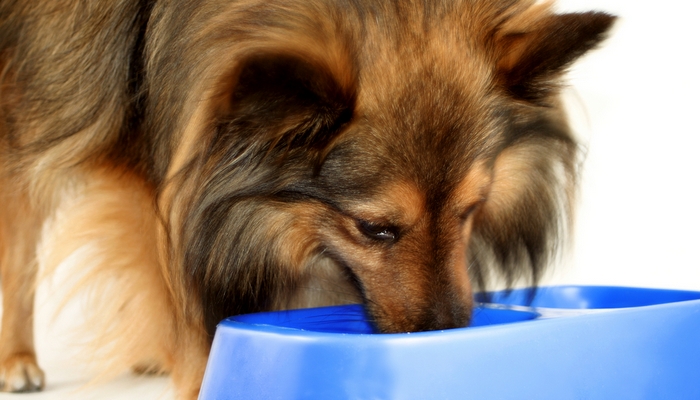
Diet Needs of a Shetland Sheepdog
Shetland Sheepdog will require healthy, balanced food. Owners can prepare high-quality dog food or homemade dog food.
You can research or inquire with the veterinarian about what food is best and should not be given to them.
At least 3 to 4 cups of food distributed twice or thrice a day is sufficient for them. Owners can also provide wet food to promote hydration.
Mixing it in their dry food can add different flavors to their usual everyday meal. Of course, fresh water is a must.
A strict feeding schedule is a must for these dogs as a part of training as well. Treats are to be given fairly but not too much. Shetland Sheepdogs are prone to obesity.
Like all dogs, it’s best not to leave food with them when unfinished. It’s best to get the food after 30 minutes of feeding.
Owners can check with their veterinarians regarding ingredients or certain foods Shetland Sheepdogs may be allergic to.
Grooming
The Shetland Sheepdog has a moderate grooming level. Shetland Sheepdog has a long double type of coat that sheds seasonally.
Double coats need maintenance as they play a role in regulating their body temperature.
Coat
Since Shetland Sheepdogs have a long type of coat, owners should watch carefully for any matting or tangles as they can accumulate grime and may even affect the area.
Owners should examine the areas under their legs, their stomach, their mane, and behind their ears.
It’s best to cut the matting to avoid any more skin trauma.
Shetland Sheepdogs may need weekly brushing to avoid matting and tangling in their long coat. This can be done at least twice a week.
Shelties can be bathed after every water activity or after they have grime after an activity.
They are recommended to be bathed at least twice or thrice a month. Brushing their hair is more prioritized as their coat tends to matte when grime lingers.
Ears
Remember to fry their ears well after a bath. Shetland Sheepdogs can have their ears cleaned weekly.
Owners should make sure to clean it thoroughly and cut the hair in the ear lobe if dirt adheres. This can help avoid ear infections in the future.
Nails
Shetland Sheepdog’s nails should be trimmed or filed at least once every two weeks. Nail trimming should be undemanding.
This behavior can be easily influenced by any dog as long as they are exposed to these things calmly and casually.
Teeth
Shetland Sheepdogs should have their teeth brushed at least once a week. It is to prevent buildup that may cause chronic disease when they’re older.
Introducing this routine while they are still young can help ease the activity both for the owner and the dog.
Grooming should be done when they’re young so they can get accustomed to it when they’re older.
The best time to introduce grooming is when they’re more relaxed or worn out from playtime.

Frequently Asked Questions About Shetland Sheepdogs
Do Shetland Sheepdogs bark a lot?
Yes. Shetland Sheepdogs are quite a vocally expressive breed. Shelties also bark whether they are happy, excited, or displeased with something.
They also have a very strong sense of protection for their territory and family, and vocalizing this ‘possible’ threat is one way to let their people know.
If owners would like to tone down this trait, basic training or correctional conditions can be used while they’re young. Training adults may be harder, but results will show.
Are Shelties destructive?
Not really. Unless the Sheltie is not getting its required mental and physical essentials, it will unlikely be destructive.
Shelties can also be destructive if left alone for long periods.
As a highly intelligent breed, they may easily get bored and may explore ways to entertain themselves.
Do Shelties need haircuts?
Yes, they still do. Although it is not necessary to cut their hair to long lengths, a trim will suffice to maintain the coat's health.
It is also not recommended that they shave their hair off unless medically necessary.

Shetland Sheepdog Dog Breed Profile Summary
If you’re looking for a loving and free-spirited companion, Shetland Sheepdog is the one for you!
Shetland Sheepdogs are the perfect dogs for families who are active outdoors and indoors.
They can be the family’s companion during an adventure outside or even just a run in the park.
Shetland Sheepdog puppy’s passion for running and chasing is a sight to behold, of course, unless it’s chasing someone.
But to see the Shetland Sheepdog and its flowy coat brushed by the wind while in a rush is a must!
Please remember to adopt dogs from reputable breeders rather than from puppy mills. Irresponsible breeding can greatly affect the quality of life of the dogs.
Do have the dog checked immediately after adoption to check its condition.


